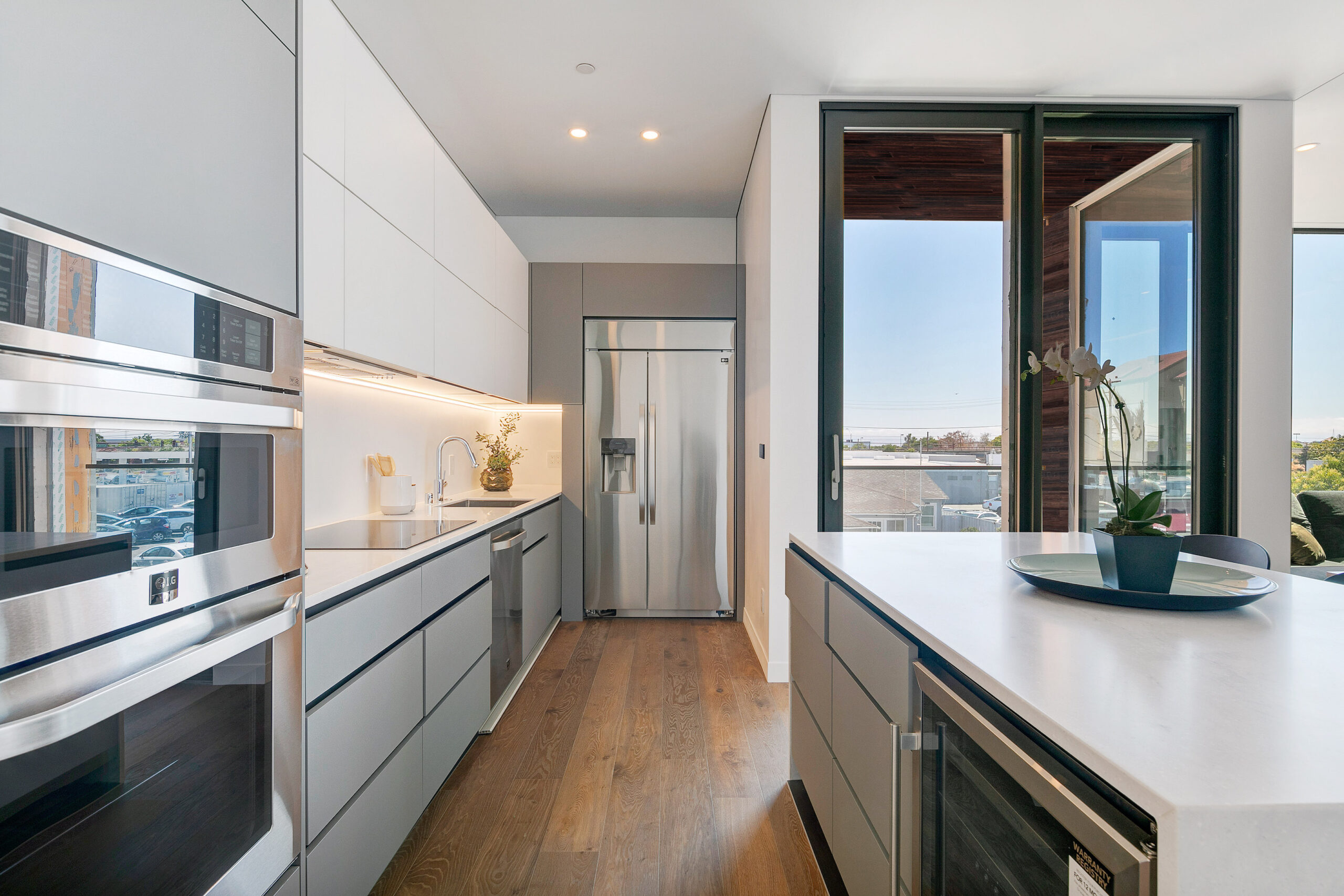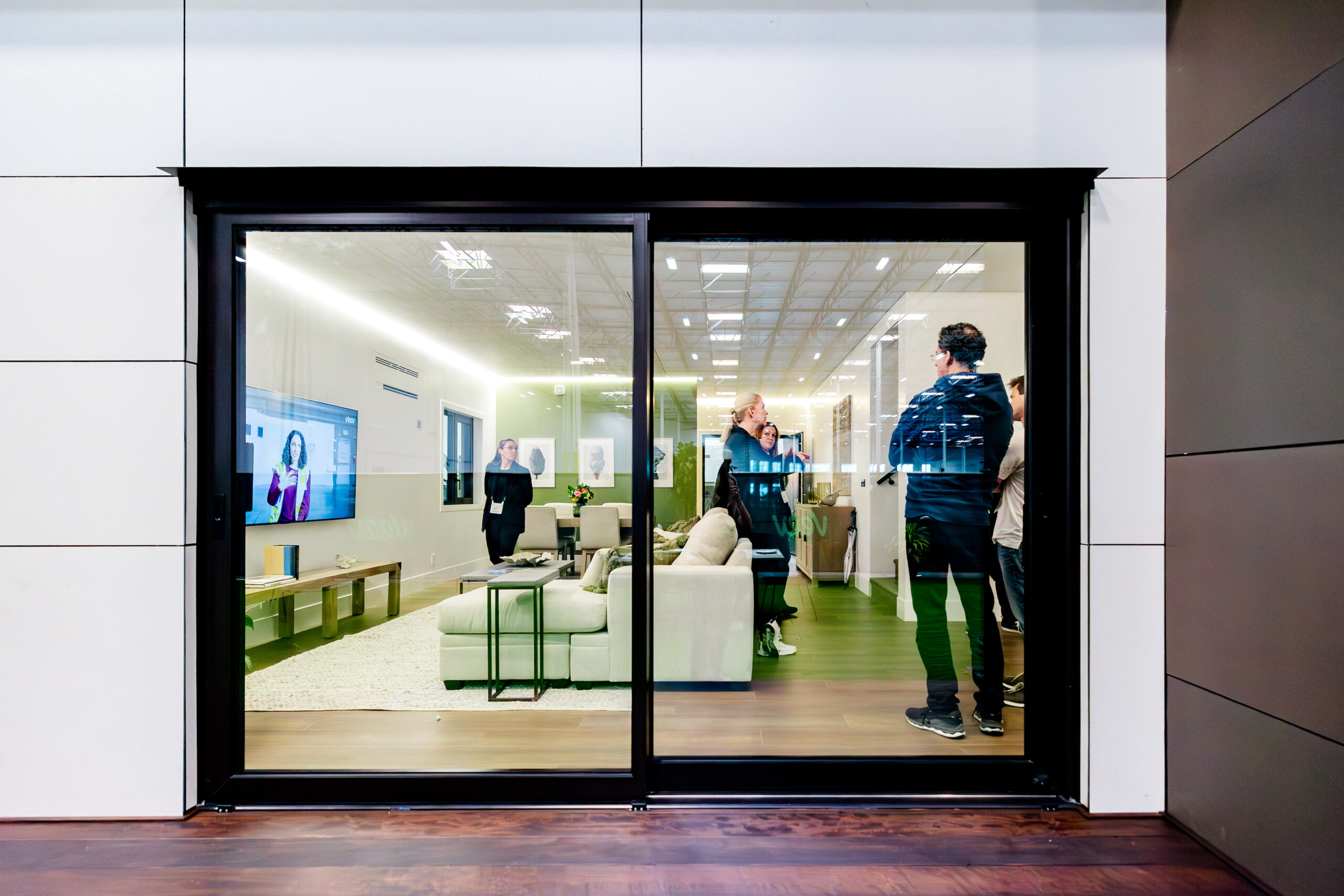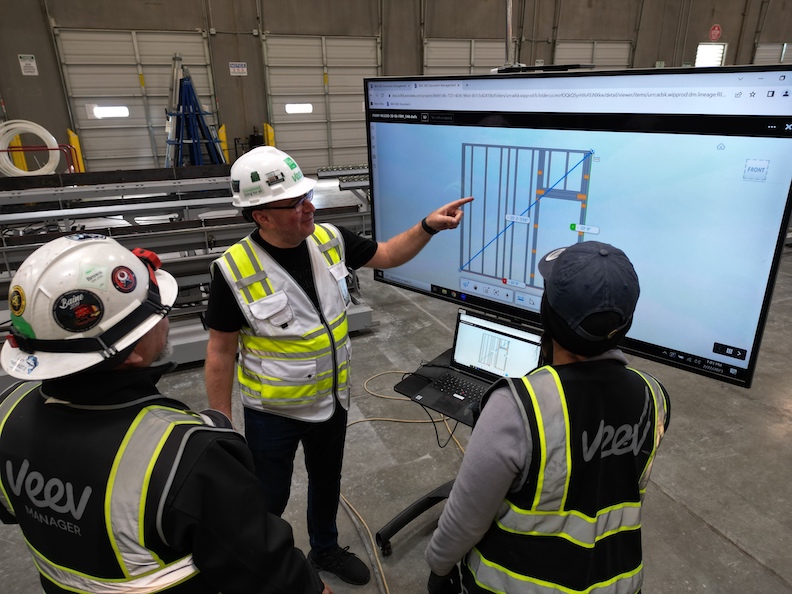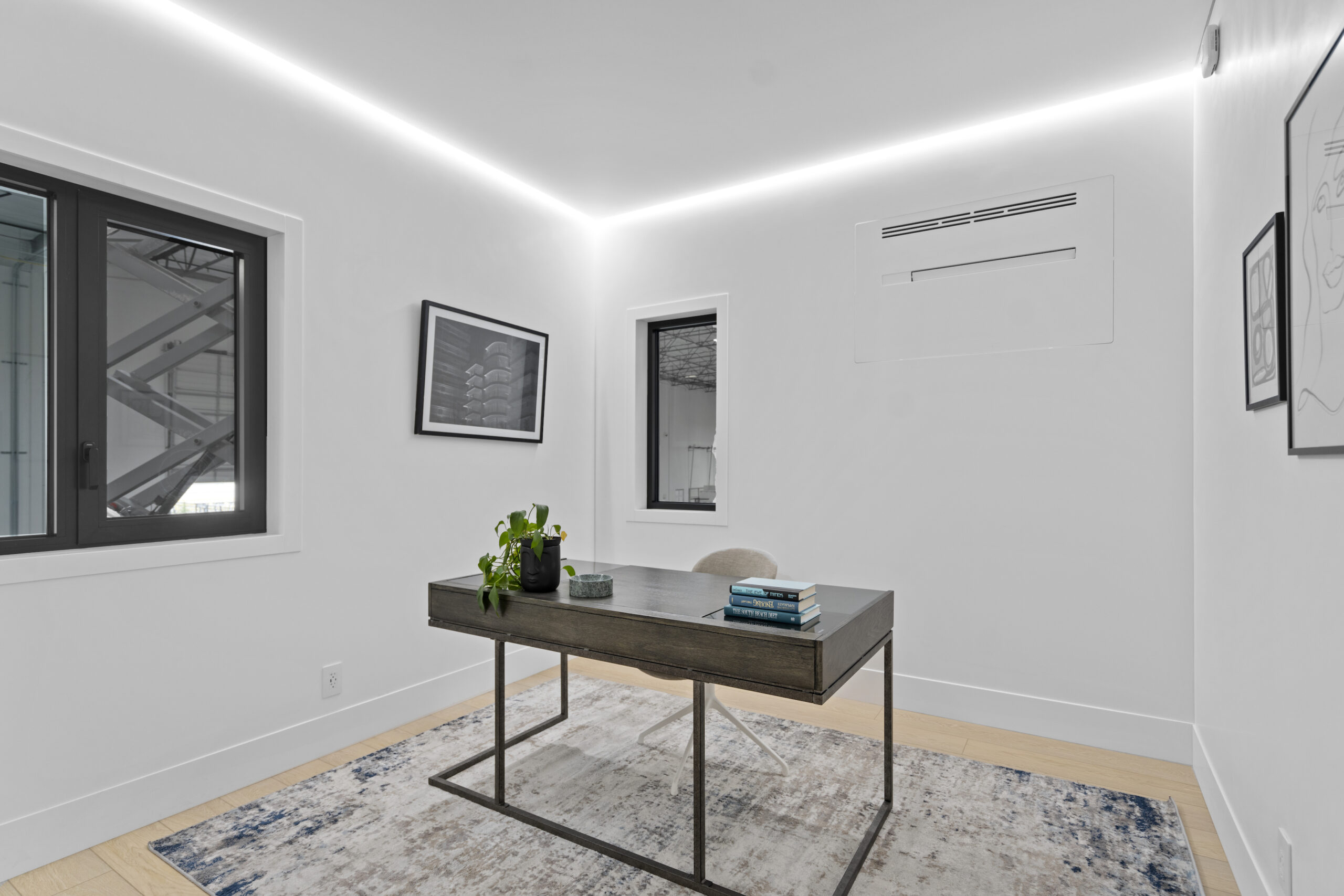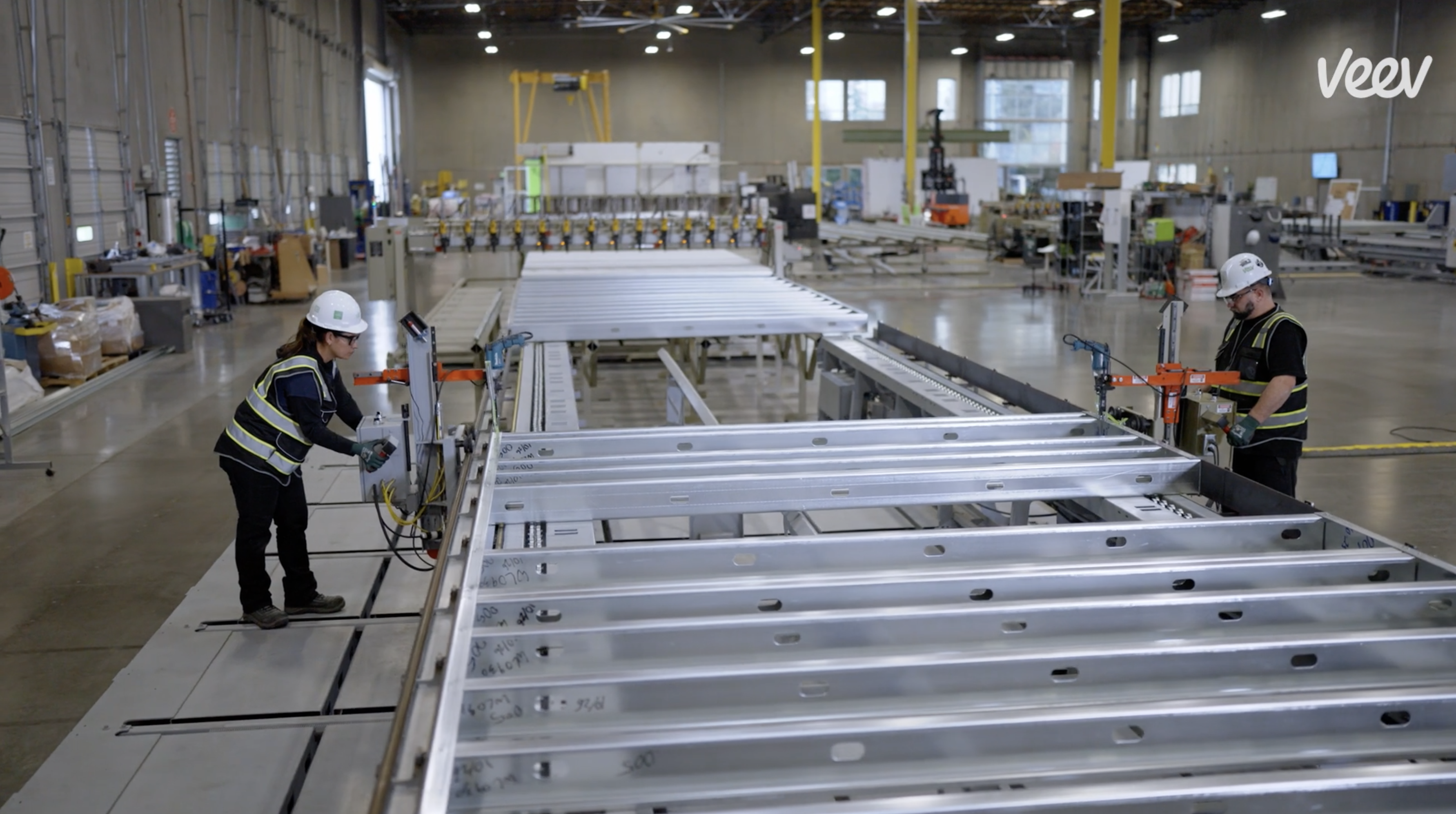
Ditch the wood: The benefits of steel framing
Steel results in more durable and sustainable homes, while also saving on build timelines and costs
Picture the world’s most famous skyscrapers: the Empire State Building in New York, the Willis Tower in Chicago or Burj Khalifa in Dubai. All of these architectural wonders are made possible thanks to the strength of steel framing. While steel has long been used to build large structures due to its durability and strength, the material is rarely used for residential homes.
Houses have relied on wood framing for centuries. But lumber can cause a host of issues during a build process, from supply chain delays to significant waste. Issues continue once a house is complete—wood’s natural life cycle includes mold, rot and pests. Homeowners are often forced to address these costly and harmful effects.
At Veev, we believe steel is the better option for both the build process and for homeowners. That’s why we’ve ditched wood, and the accompanying drywall, entirely. Instead, we use cold-formed, light-gauge steel made mostly of recycled material. This allows us to build faster, cut down on overall cost, and create near-zero waste.
The end result is an incredibly durable home less likely to need maintenance and a longevity to last lifetimes.
The benefits of steel versus wood framing for home building
When selecting our materials, we perform a rigorous, in-depth analysis that ensures each item is both sustainable and allows us to deploy the most efficient build process possible. Steel does both.
Steel is more efficient
In place of wood and drywall, we pair steel with high performance surface (HPS) to frame our closed wall system. Each wall is fully assembled — with all electrical, plumbing and mechanical components — at our digital fabrication facility and delivered ready to connect into place onsite.
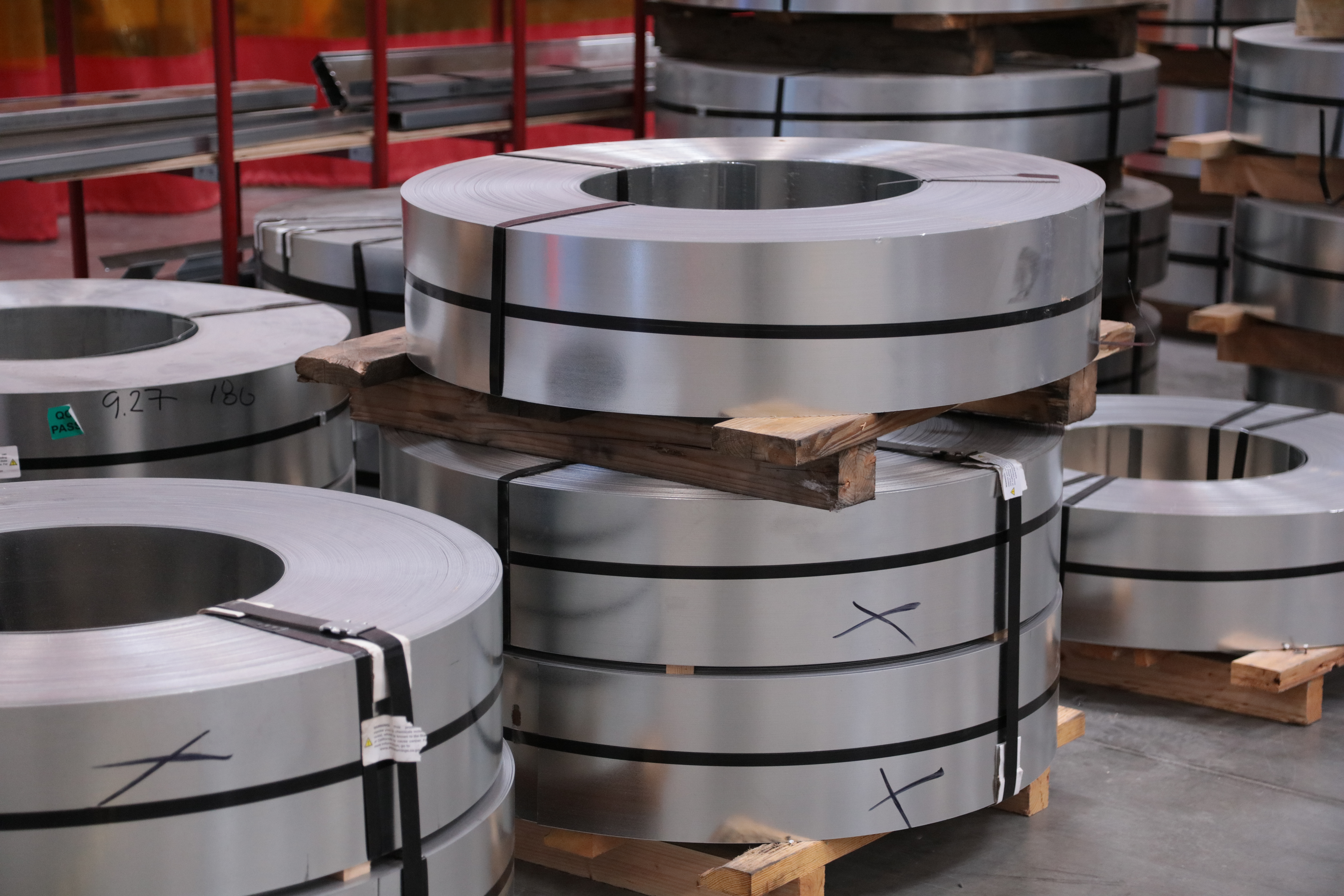
Our proprietary construction technology is vertically integrated, meaning the build process is precisely mapped out from design to completion. Steel fits into our process in ways wood couldn’t. For example, we create detailed designs with our digital twin software, which are then fed directly to steel-forming machines. The machines roll out the steel coils and cut them precisely, leaving the remaining material intact for future use. When using wood, standard sizes (often with inconsistencies) are procured and later cut to size creating useless leftover pieces and waste. This steel cutting process reduces the likelihood for errors and, in turn, pushed back timelines.
While a typical home requires tens of thousands of line items, a Veev home requires roughly 5,000 — with the goal of reducing to 1,000 — in part thanks to our use of steel.
That’s because we can use it in multiple places, including to form the entire frame — from the studs to the tracks to frame connectors. This cuts down on supply chain delays common with lumber and other materials needed in traditional wood-framed houses.
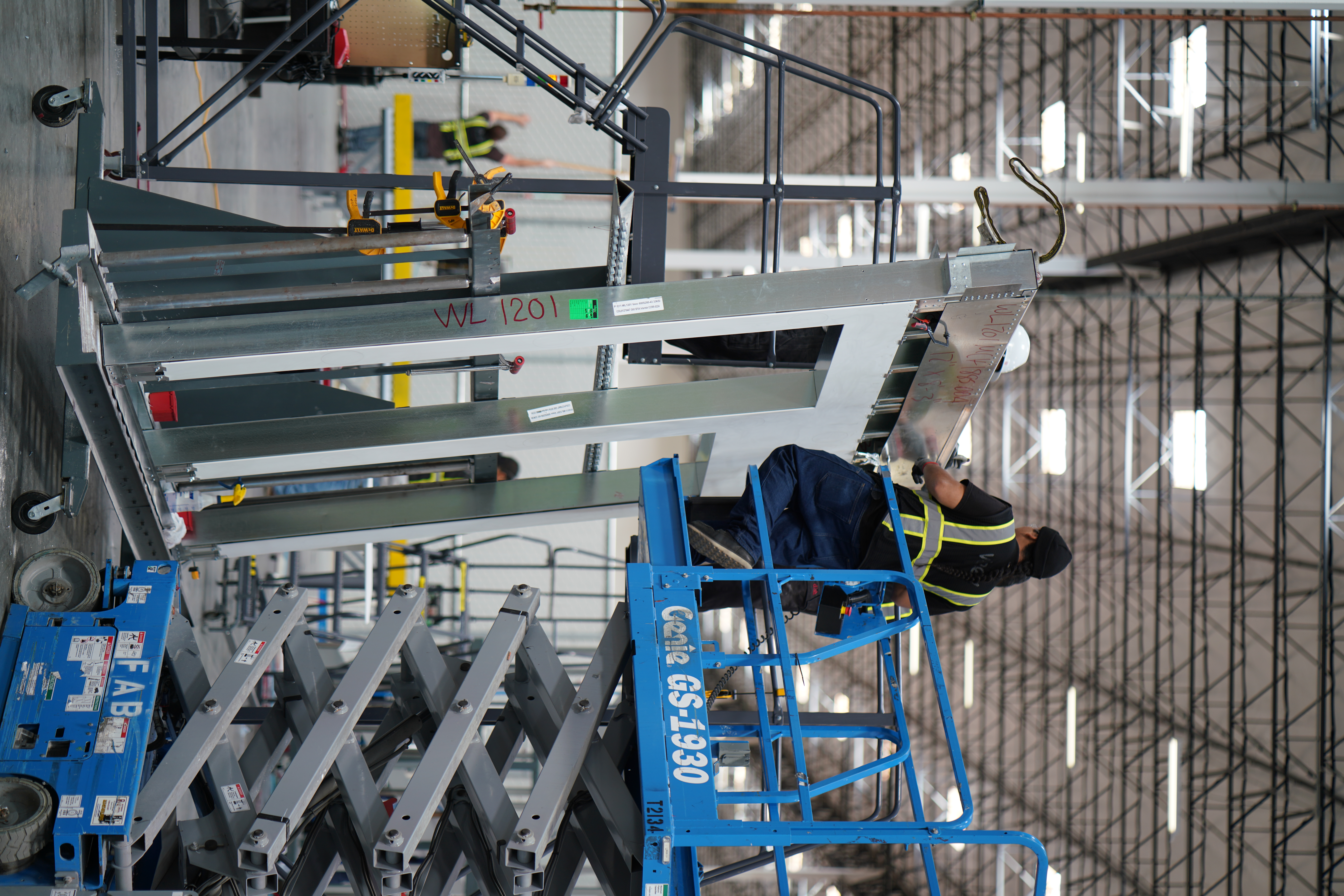
Sidebar: How we form our steel frame, in five steps
- Steel arrives in large cold-rolled coils.
- Coils are fed through our roll-forming machine to shape the steel for use.
- Resulting parts are fused together in our digital fabrication facility: vertical studs are held together by horizontal tracks to form the frame.
- Steel frame is used alongside HPS to build a closed wall.
- On site, closed wall panels come together to form the Veev home, connected and supported throughout by steel anchors.
Steel saves on overall cost
Many of the ways steel saves on build costs are a result of the ways it increases efficiency, including minimizing supply chain disruptions and timeline delays.
While steel is often priced higher than lumber up front, it’s an investment that pays dividends in the long run when embedded into our build process in a fabricated environment. Lumber prices have also skyrocketed, nearly quadrupling to $1,607 per thousand feet in 2021.
Carpentry also requires additional specialized labor that drives up build time and cost. A portion of the pandemic price spike is attributable to labor shortages. Neither our fabricated build or onsite assembly require specialized trade labor, which is often more competitive to hire.
Steel is the more sustainable choice
Steel eliminates the need to cut down trees, of course, but it offers multiple other advantages when it comes to sustainability.
Those benefits start at the start of the build: a traditionally built single family home requires the equivalent of about 100 trees (and the energy to store and transport all of that lumber), while Veev can achieve stronger framing with less steel.
In traditional homes, wood comprises up to 30% of construction and demolition waste, which requires transportation to haul it away. With our use of steel, we produce near zero waste
at our fabrication facility or onsite. We also use leftover materials as much as possible. For example, when we cut out door frames from a steel wall, we reuse that same steel to make the door itself.
Importantly, we don’t just source any steel.
Our steel comprises 70% recycled content, and at least 50% of our steel suppliers maintain 99% recycled steel content.
We are working toward a goal of sourcing 90% recycled steel — a change that would result in a 50% reduction in our overall carbon footprint compared to traditional construction.
The benefits of steel framing versus wood for homeowners
The advantages of a steel frame continue after a Veev home is complete to provide long-term value for homeowners.
No mold or pests
We specifically use galvanized steel with a layer of zinc that prevents the material from corroding. In contrast to traditional materials like wood and drywall, our steel and HPS are water resistant and non-porous. Because of this,
homeowners don’t have to worry about dampness, dry rot and mold,
which can cause a variety of health issues, especially for people with allergies, respiratory problems or a weakened immune system.
Steel framing is impervious and inedible to termites, which affect roughly 600,000 homes in the U.S. each year requiring $5 billion annually to repair.
Lifetimes of strength and resilience
Wood affected by moisture damage and termites also pose major stability risks. Wood framed homes aren’t meant to last more than a single lifetime, but Veev homes are an investment in longevity. According to the American Iron and Steel Institute, galvanized steel has an estimated minimum life expectancy of 250 years in places such as Miami, Florida. For more inland locations where there is less exposure to water and moisture, including Hamilton, Ontario, that life expectancy more than doubles.
Steel framing doesn’t expand or contract. That means it won’t shrink, settle, rot or warp over time.
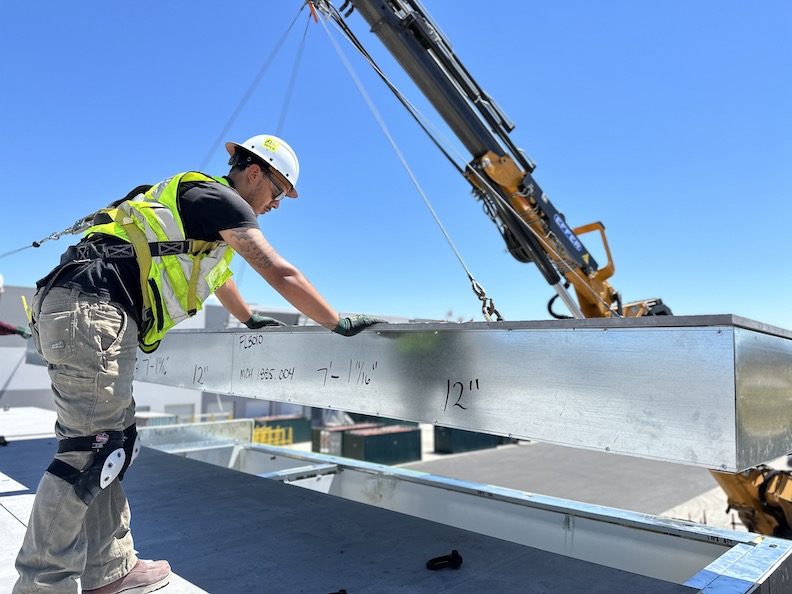
Better protection against earthquakes and fires
Our homes are even better equipped to face natural disasters. The steel frame allows the home to withstand greater lateral loads, offering better protection against earthquake forces and hurricane winds. Steel is also fire-resistant and non-combustible compared to wood’s inherent flammability. In fact, Veev homes all have a Class A fire rating, lowering the risk of fire and the associated insurance premiums.
With Veev, homeowners can rest assured their home will continue to be a safe place to live for generations to come.
The strength of our steel-framed homes can be felt simply by standing inside. Are you a developer ready to learn more? Schedule a tour today at veev.com/contact.
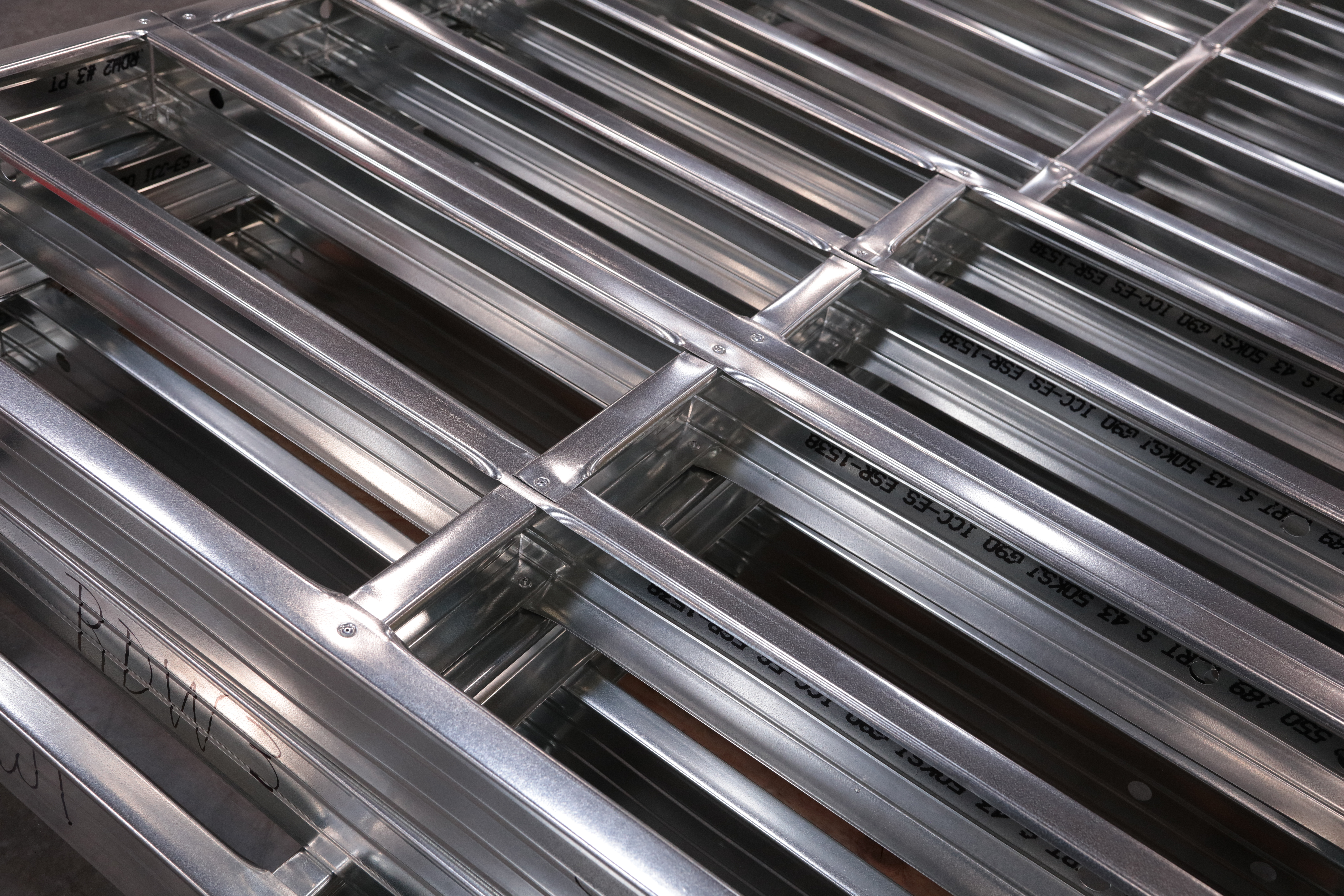
Sidebar: How we use steel
By serving multiple purposes, steel reduces the need for additional line items resulting in minimized waste and additional cost-savings:
- Framing – The structural support to the closed wall, including tracks and connectors
- Doors – Provides increased fire protection and soundproofed acoustics
- Home Foundation – Used in helical piles anchored in the ground to serve as the primary foundation. A steel bed frame is built on top to support the walls
